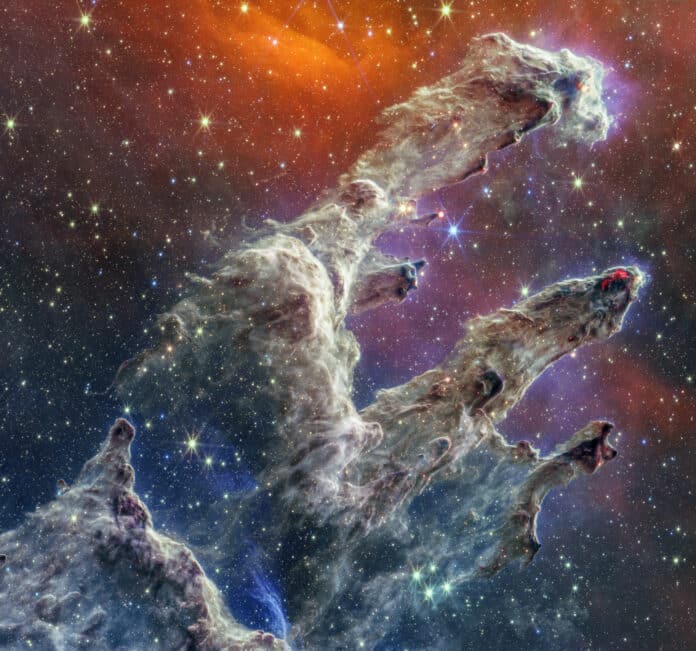Proteins made of amino acids drive the chemical gears of life. Scientists are keen to comprehend the origins of amino acids because of their connection to living things. After all, amino acids may have contributed to the origin of life on Earth after being transported here by asteroid or comet fragments some 4 billion years ago.
If so, were comets or asteroids responsible for producing amino acids? Or did the building blocks of life originate from the icy, gaseous, and dusty interstellar molecular cloud that gave rise to our solar system and countless others?
In a new study, scientists at NASA‘s Goddard Space Flight Center in Greenbelt, Maryland, sought to explore how amino acids and amines – their chemical cousins – may have formed. They approached this by simulating meteorite parent body aqueous alteration of interstellar residue analogs.
To simulate the circumstances they would have encountered inside asteroids, the scientists created ices similar to those seen in interstellar clouds, blasted them with radiation, and then exposed the residual material, which included amines and amino acids, to water and heat.
The ice was created using molecules that telescopes have commonly detected in interstellar clouds, such as water, methanol, carbon dioxide, and ammonia. Later, scientists used a Van de Graaff particle accelerator at Goddard to zap the ice with high-energy protons to mimic the cosmic radiation the ices would have experienced in a molecular cloud.
Simple molecules were split apart by the radiation process. These molecules were joined again to form more intricate amines and amino acids, like glycine and ethylamine. There were sticky residues of the amino acids.
Danna Qasim, who worked on this experiment while she was a postdoctoral fellow at NASA Goddard from 2020 to 2022, said, “We expect that these residues from the interstellar cloud are transferred to the protoplanetary disk that creates a solar system, including asteroids.”
Next come asteroid simulations.
Scientists were able to reproduce the “aqueous modification” conditions inside some asteroids billions of years ago by immersing the residues in water tubes and heating them to various temperatures and for diverse lengths of time. They then examined how the molecules responded to these warm, wet conditions.
They discovered that, regardless of asteroid circumstances, the types of amines and amino acids produced in laboratory interstellar ice and their quantities remained constant. This suggests that amines and amino acids can travel from the interstellar cloud to an asteroid while intact.
However, each molecule responded to asteroid-like conditions differed depending on how much heat was supplied and for how long by the scientists. After seven days of simulating an asteroid, glycine levels, for instance, increased while ethylamine levels scarcely changed.
Numerous other scientists have created Interstellar ice, exposing them to radiation. They have discovered that this mechanism produces amines and amino acids, just like the Goddard team did. However, the molecules created in laboratories differ from those found in meteorites.
Materese said, “Laboratory experiments focused solely on ice irradiation are not fully capturing the reality of the chemistry experienced by these compounds. So part of the goal of this work was to see if we can close that gap.”
The research team has not yet closed the gap. They found that even after simulating asteroid conditions, the amines and amino acids they produced still didn’t match those in meteorites.
Journal Reference:
- Danna Qasim*, Hannah L. McLain et al. Meteorite Parent Body Aqueous Alteration Simulations of Interstellar Residue Analogs. American Chemical Society. DOI: 10.1021/acsearthspacechem.2c00274
